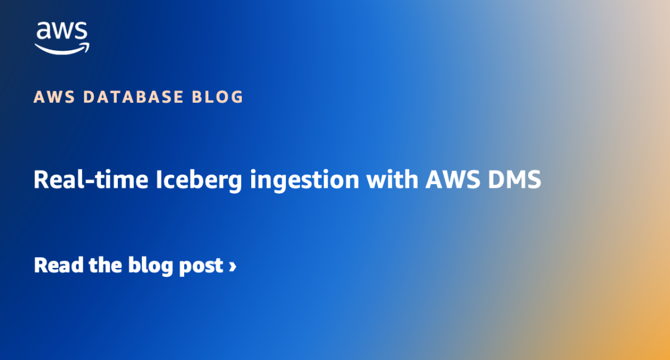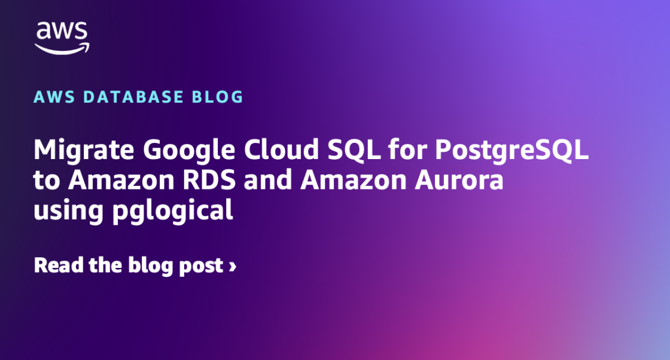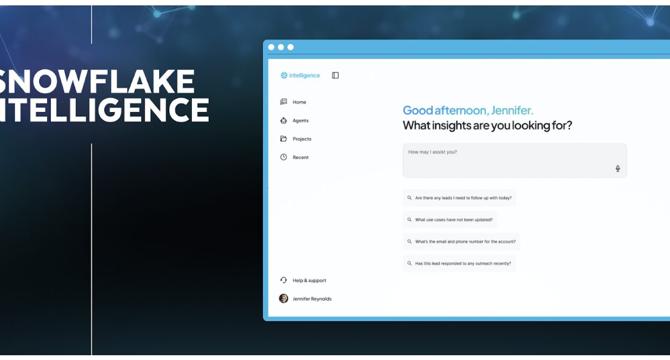Databases
VoltDB
264

Image Credit: VoltDB
Predictive vs. Preventive Maintenance: What’s the Difference—and Why It Matters
- Preventive maintenance is a scheduled approach involving routine inspections and part replacements at set intervals, while predictive maintenance uses real-time data to forecast maintenance needs based on equipment condition.
- Preventive maintenance reduces unexpected breakdowns but may lead to unnecessary maintenance, whereas predictive maintenance minimizes downtime by fixing issues before they occur.
- Preventive maintenance relies on scheduled triggers and has lower data dependence, while predictive maintenance requires real-time data platforms, sensors, and analytics, making it more complex and suitable for critical systems.
- The ideal strategy often involves a combination of preventive and predictive maintenance, evolving from preventive to predictive as data capabilities grow, with Volt Active Data highlighted for enabling predictive maintenance through real-time data processing.
Read Full Article
15 Likes
Amazon
327

Image Credit: Amazon
Real-time Iceberg ingestion with AWS DMS
- Real-time Iceberg ingestion with AWS DMS enables low-latency access to fresh data with reduced complexity and improved efficiency.
- AWS DMS simplifies the migration of various data stores, enabling migrations into the AWS Cloud or between cloud and on-premises setups.
- Iceberg, an open table format, facilitates large-scale analytics on data lakes with ACID support, schema evolution, and time travel.
- Etleap customers benefit from Iceberg by achieving low latency, operational consistency, and simplifying data replication across multiple data warehouses.
- Exactly-once processing in low-latency pipelines is ensured using Flink's two-phase commit protocol, maintaining data integrity and fault tolerance.
- Iceberg table maintenance includes tasks like data file compaction and snapshot expiration to ensure high query performance and storage efficiency.
- Etleap integrates Iceberg tables with various query engines like AWS Athena, Amazon Redshift, Snowflake, making data querying seamless across platforms.
- Building reliable, low-latency data pipelines with Iceberg utilizing AWS tools and Iceberg's features supports real-time operational requirements and data lake modernization.
- The architecture demonstrated in the post enables streaming changes from operational databases to Iceberg with end-to-end latencies of under 5 seconds.
- Caius Brindescu, a Principal Engineer at Etleap, highlights the benefits of Iceberg ingestion and his expertise in Java backend development and big data technologies.
Read Full Article
19 Likes
Amazon
358

Image Credit: Amazon
Migrate Google Cloud SQL for PostgreSQL to Amazon RDS and Amazon Aurora using pglogical
- PostgreSQL is a popular open-source relational database for many developers and can be easily deployed on AWS with services like Amazon RDS and Aurora PostgreSQL-Compatible Edition.
- Migrating a PostgreSQL database from Google Cloud SQL to Amazon RDS or Aurora can be accomplished using the pglogical extension for logical replication.
- The pglogical extension replicates data changes efficiently and is resilient to network faults, functioning with both RDS for PostgreSQL and Aurora PostgreSQL.
- Steps involve setting up the primary Cloud SQL instance, configuring logical replication with pglogical extension, and creating provider and subscriber nodes.
- Limitations of pglogical include the need for workarounds for sequences, primary key changes, extensions, materialized views, and DDLs during migration.
- The setup allows for replicating lower PostgreSQL versions to higher ones and the authors provide expertise in database migration and optimization.
- The use of surrogate keys, manual extension replication, and considerations for schema changes and large objects are discussed to address limitations in replication.
- The post provides detailed steps, commands, and precautions for a successful migration from Google Cloud to AWS RDS or Aurora PostgreSQL.
- Authors include Sarabjeet Singh, Kranthi Kiran Burada, and Jerome Darko, who specialize in database solutions and migrations at AWS.
Read Full Article
21 Likes
Amazon
101

Image Credit: Amazon
Upgrade your Amazon DynamoDB global tables to the current version
- Amazon DynamoDB is a serverless NoSQL database with single-digit millisecond performance that offers global tables for replicating data across AWS Regions.
- The Current version of global tables (2019.11.21) is more efficient and user-friendly compared to the Legacy version (2017.11.29).
- Operational benefits of the Current version include improved availability, operational efficiency, and cost effectiveness.
- The Current version offers lower costs, consuming up to 50% less write capacity than the Legacy version for common operations.
- Upgrading to the Current version requires fulfilling prerequisites, such as consistent TTL settings and GSI configurations.
- Considerations before upgrading involve understanding behavior differences between versions, like changes in conflict resolution methods.
- Upgrading can be initiated with a single click in the AWS management console, ensuring no interruption in availability during the process.
- Post-upgrade validation involves confirming data accessibility and conducting conflict resolution tests across regions.
- Common challenges during the upgrade process include inconsistencies in settings and permissions, which can be mitigated through proper auditing and tooling updates.
- AWS recommends using the Current version for enhanced cost efficiency, automated management, and multi-region resilience.
Read Full Article
6 Likes
Discover more
- Programming News
- Software News
- Web Design
- Devops News
- Open Source News
- Cloud News
- Product Management News
- Operating Systems News
- Agile Methodology News
- Computer Engineering
- Startup News
- Cryptocurrency News
- Technology News
- Blockchain News
- Data Science News
- AR News
- Apple News
- Cyber Security News
- Leadership News
- Gaming News
- Automobiles News
Cloudblog
367

Image Credit: Cloudblog
From data lakes to user applications: How Bigtable works with Apache Iceberg
- The latest Bigtable Spark connector version offers enhanced support for Bigtable and Apache Iceberg, enabling direct interaction with operational data for various use cases.
- Users can leverage the Bigtable Spark connector to build data pipelines, support ML model training, ETL/ELT, and real-time dashboards accessing Bigtable data directly from Apache Spark.
- Integration with Apache Iceberg facilitates working with open table formats, optimizing queries and supporting dynamic column filtering.
- Through Data Boost, high-throughput read jobs can be executed on operational data without affecting Bigtable's performance.
- Use cases include accelerated data science by enabling data scientists to work on operational data within Apache Spark environments, and low-latency serving for real-time updates and serving predictions.
- The Bigtable Spark connector simplifies reading and writing data from Bigtable using Apache Spark, with the option to create new tables and perform batch mutations for higher throughput.
- Apache Iceberg's table format simplifies analytical data storage and sharing across engines like Apache Spark and BigQuery, complementing Bigtable's capabilities.
- Combining advanced analytics with both Bigtable and Iceberg enables powerful insights and machine learning models while ensuring high availability and real-time data access.
- User applications like fraud detection and predictive maintenance can benefit from utilizing Bigtable Spark connector in combination with Iceberg tables for efficient data processing.
- The integration of Bigtable, Apache Spark, and Iceberg allows for accelerated data processing, efficient data pipelines handling large workloads, and low-latency analytics for user-facing applications.
Read Full Article
22 Likes
Dev
61

Image Credit: Dev
Safeguarding Your PostgreSQL Data: A Practical Guide to pg_dump and pg_restore
- PostgreSQL users can rely on pg_dump and pg_restore utilities for data backup and recovery.
- pg_dump creates a dump of a PostgreSQL database, facilitating recreation of the database.
- Key options for pg_dump include connection settings, output control, and selective backup features.
- Backup strategies like full database, specific tables, schema-only, and plain text backups are discussed.
- pg_restore and psql are used for restoring backups in various formats.
- Restoration scenarios cover custom/archive formats and plain text dumps.
- Advanced tips address permissions, ownership issues, and choosing the right backup format.
- Recommendations include automating backups and utilizing tools like Chat2DB for streamlined database management.
- Understanding and effectively using pg_dump and pg_restore is essential for data protection and management in PostgreSQL.
- Automating backups is crucial for data safety, and tools like Chat2DB can enhance database management experiences.
- Elevate database management with Chat2DB for simplifying tasks, optimizing queries, and enhancing productivity.
Read Full Article
3 Likes
Sdtimes
234

Image Credit: Sdtimes
Snowflake introduces agentic AI innovations for data insights
- Snowflake has introduced new agentic AI innovations to bridge the gap between enterprise data and business activity, creating connected and trusted AI and ML workflows.
- Snowflake Intelligence, powered by intelligent data agents, offers a natural language experience for generating actionable insights from structured and unstructured data, utilizing Snowflake Openflow and LLMs from Anthropic and OpenAI.
- Snowflake's AI capabilities have expanded with solutions like SnowConvert AI and Cortex AISQL, enabling faster migrations from legacy platforms to Snowflake and providing generative AI tools for extracting insights from various data sources.
- CData Software has launched the CData Snowflake Integration Accelerator, offering no-code data integration tools for Snowflake customers to enhance data ingestion, transformations, and live connectivity with Snowflake data.
Read Full Article
14 Likes
Dev
421

Image Credit: Dev
Postgres vs. MySQL: DDL Transaction Difference
- Database schema changes require careful planning and execution, making DDL transaction handling crucial for database management systems.
- Transactional DDL in PostgreSQL 17 allows DDL statements in multi-statement transaction blocks for atomic commit or rollback.
- PostgreSQL ensures that DDL operations are fully transactional except for certain database or tablespace operations.
- MySQL 8 introduced Atomic DDL, providing statement-level atomicity but lacks support for multi-statement transactions.
- MySQL 8's DDL statements are atomic at the statement level, committing implicitly before execution.
- MySQL's atomic DDL is restricted to InnoDB storage engine, ensuring crash recovery and statement-level atomicity.
- In PostgreSQL, transactional DDL allows for complete rollback of all DDL operations within a transaction.
- MySQL 8 only supports statement-level atomicity, undoing an entire DDL transaction block is not possible.
- PostgreSQL's DDL handling supports multi-statement transactions and savepoints, providing fine-grained control over schema changes.
- In summary, PostgreSQL 17 offers full transactional DDL with multi-statement support, while MySQL 8 provides atomic DDL at the statement level.
Read Full Article
25 Likes
VentureBeat
93

Image Credit: VentureBeat
CockroachDB’s distributed vector indexing tackles the looming AI data explosion enterprises aren’t ready for
- Cockroach Labs' latest update focuses on distributed vector indexing and agentic AI in distributed SQL scale, promising a 41% efficiency gain and core database improvements.
- With a decade-long reputation for resilience, CockroachDB emphasizes survival capabilities aimed to meet mission-critical needs, especially in the AI era.
- The introduction of vector-capable databases for AI systems has become commonplace in 2025, yet distributed SQL remains crucial for large-scale deployments.
- CockroachDB's C-SPANN vector index utilizes the SPANN algorithm to handle billions of vectors across a distributed system.
- The index is nested within existing tables, enabling efficient similarity searches at scale by creating a hierarchical partition structure.
- Security features in CockroachDB 25.2 include row-level security and configurable cipher suites to address regulatory requirements and enhance data protection.
- Nearly 80% of technology leaders feel unprepared for new regulations, emphasizing the growing concern over financial impacts of outages due to security vulnerabilities.
- The rise of AI-driven workloads introduces 'operational big data,' demanding real-time performance and consistency for mission-critical applications.
- Efficiency improvements in CockroachDB 25.2, like generic query plans and buffered writes, enhance database performance and optimize query execution.
- Leaders in AI adoption must consider investing in distributed database architectures to handle the anticipated data traffic growth from agentic AI.
Read Full Article
5 Likes
Analyticsindiamag
141

Image Credit: Analyticsindiamag
Why CarDekho Replaced SAP with Oracle Ahead of IPO
- CarDekho is focusing on technology-driven financial transformation as it prepares for its IPO, relying on Oracle's cloud-based ERP solution for streamlined financial operations.
- The move from an outdated SAP system to Oracle was driven by the need for enhanced capabilities, scalability, and cost savings, with Oracle's cloud model offering advantages like reduced operational costs and easier updates.
- Implementation of Oracle ERP, EPM, and SCM modules aimed to consolidate systems, reduce reliance on Excel, and improve business processes at CarDekho.
- CarDekho is among many companies transitioning from SAP to Oracle for better efficiency, cost savings, and streamlined operations.
- The switch to Oracle has enabled CarDekho to standardize operations, gain real-time insights, and prepare for further value with Oracle's EPM module.
- CarDekho is looking towards AI adoption for automating standard processes and leveraging Oracle's AI capabilities for improved efficiency.
- The move towards cloud-first platforms like Oracle showcases how finance teams are embracing technology for speed, consistency, and scalability, setting the stage for IPOs and future tech adoption.
Read Full Article
8 Likes
Medium
394

Image Credit: Medium
When You Use Indexing, How Indexing Affects Query Execution and MySQL’s Internal Processes?
- Indexing is crucial for fast data retrieval in relational databases like MySQL.
- MySQL heavily relies on indexing to optimize queries, but a lack of understanding can lead to performance issues.
- This article explores MySQL's indexing mechanisms, including clustered and secondary indexes, B+ tree data structures, and query execution processes.
- Indexes in MySQL, particularly B+ trees, allow for quick locating of rows based on conditions, improving query efficiency.
Read Full Article
23 Likes
Dbi-Services
217

Guidance for a SQL Server backup strategy in AWS EC2
- S3 storage is a reliable option to store backups long term in AWS EC2.
- The preferred ways to backup SQL Server in AWS EC2 include using URLs or Storage Gateway with File Gateway for S3 replication.
- Backup retention strategies are crucial for data longevity, with options like optimizing storage class and defining retention periods.
- S3 lifecycle policies are set up to manage retention, transitioning objects to appropriate storage classes and deleting them after specified periods.
- Archiving backups efficiently requires custom scripts to move backups between different prefixes in S3, scheduled using tools like AWS Lambda or SQL Server Agent.
- Accessing S3 from EC2 involves setting up IAM roles and securing temporary AWS credentials for read/write access only.
- Retrieving backups for archiving is facilitated by tools like dbatools PowerShell module, aiding in selecting and processing backups based on defined criteria.
- Archiving backups involves constructing source and destination keys in S3, and copying backups to designated prefixes using tools like Copy-S3Object.
- Implementing a SQL Server backup strategy in AWS EC2 involves demystifying concepts, defining retention policies, and using tools like dbatools for efficient archiving.
- Similar approaches can be applied to other RDBMS in EC2, with considerations for access restrictions and compression settings in SQL Server backups.
Read Full Article
13 Likes
Dev
257

Image Credit: Dev
Understanding and Inspecting Indexes in MySQL: A Comprehensive Guide
- Indexes in MySQL help improve performance by reducing the data volume scanned for queries.
- Inspecting and understanding indexes is crucial for database optimization and maintenance.
- MySQL supports primary, unique, full-text, spatial, composite, and prefix indexes.
- SHOW INDEX commands allow inspecting defined keys and their attributes in MySQL.
- Understanding index structures, cardinality, and composite designs is essential for efficient querying.
- Removing redundant indexes and optimizing composite designs can improve query performance.
- Evaluation of existing indexes before adding new ones is important for query efficiency.
- The information_schema.STATISTICS table provides a centralized view of all index metadata in a schema.
- Automation tools like Releem can help track query performance and suggest index improvements.
- Continuous monitoring and adjustment of indexes are essential for maintaining database performance.
Read Full Article
15 Likes
Amazon
252

Image Credit: Amazon
Streamline code conversion and testing from Microsoft SQL Server and Oracle to PostgreSQL with Amazon Bedrock
- Organizations are migrating from legacy database engines like Microsoft SQL Server and Oracle to PostgreSQL to reduce costs and enhance flexibility.
- Amazon Bedrock, a generative AI platform, helps simplify and accelerate code conversion tasks for migrations.
- Challenges in database migration include schema conversion, business logic transformation, data migration, application changes, and performance tuning.
- Amazon Bedrock automates schema and code conversion, AI-driven data transformation, code compatibility insights, and intelligent testing.
- Prompt engineering with AI models like Anthropic’s Claude in Amazon Bedrock enhances code conversion accuracy and efficiency.
- Example code conversion from Microsoft SQL Server to PostgreSQL is demonstrated using Amazon Bedrock.
- Amazon Bedrock provides code coverage analysis for the generated test cases and ensures comprehensive testing for the converted code.
- Validation scripts and test data are offered by Amazon Bedrock to test the converted function in your PostgreSQL environment.
- Automating test cases with Amazon Bedrock APIs can streamline code validation, performance assessment, and business logic optimization.
- AWS tools and services, including Amazon Bedrock and Database Migration Service, accelerate database modernization and migration tasks.
- Authors Viswanatha Shastry Medipalli, Jose Amado-Blanco, and Swanand Kshirsagar share expertise in database migrations and cloud architecture.
Read Full Article
15 Likes
Amazon
405

Image Credit: Amazon
Implement prescription validation using Amazon Bedrock and Amazon DynamoDB
- Healthcare providers are now using generative AI capabilities to search patient records and verify medication safety without complex queries.
- An AI agent created with Amazon Bedrock and DynamoDB helps healthcare providers identify potential drug interactions in new prescriptions.
- The solution leverages the speed of DynamoDB and natural language processing of Amazon Bedrock to access medication records and interactions.
- DynamoDB data model allows quick lookups of patient records and medications with single-digit millisecond performance crucial in healthcare.
- Each patient's medication record in DynamoDB contains interaction checks, enabling quick access and comprehensive history.
- A prescription validation system is implemented, enabling healthcare providers to check drug interactions through conversations.
- The solution uses a single-table design in DynamoDB for efficient data retrieval.
- Amazon Bedrock knowledge base is utilized for medication classifications and interaction effects.
- The implementation provides Lambda functions for querying patient records and updating interactions in DynamoDB.
- The solution presents performance metrics, scaling guidance, cost breakdown, security considerations, and troubleshooting tips.
Read Full Article
24 Likes
For uninterrupted reading, download the app